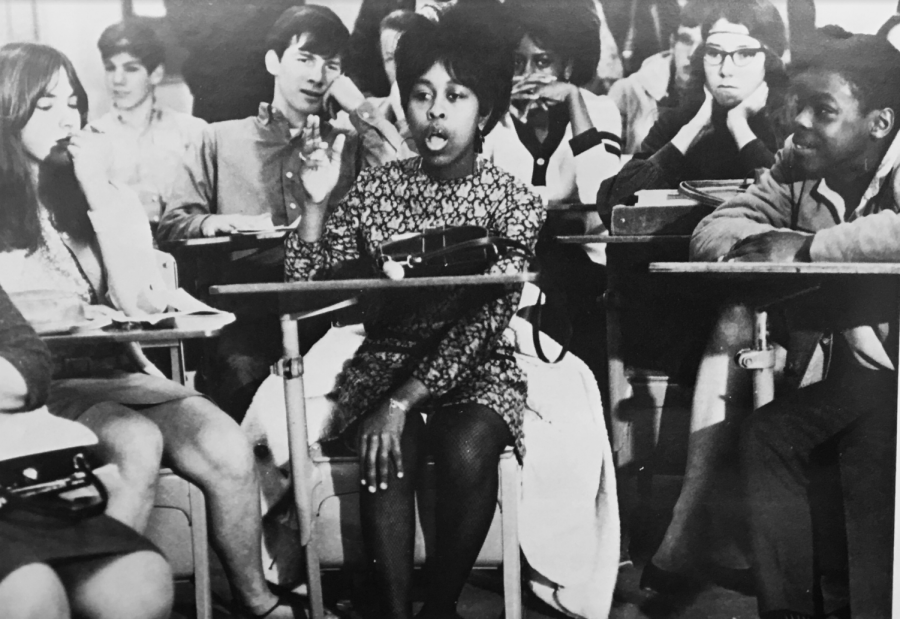Editorial: Not Quite Breaking Through
In the summer of 2017, two former Tam students spray painted a racial epithet on the side of Wood Hall, directed at our principal J.C. Farr. While this hate crime was egregious and despicable, it provided the us with an opportunity to openly discuss the racial inequality and prejudice that exists within the Tam community. Unfortunately, two years later, this opportunity largely has been squandered, as efforts to address racism have been inconsistent due to the lack of a cohesive initiative on the part of teachers, administration, and, most importantly, students.
Racism at Tam was prevalent long before 2017, and it has certainly persisted since then. The evidence for this is overwhelming, whether it’s the racial achievement gap in GPA and standardized test scores, the lack of diversity in extracurricular programs, or the negative experiences reported by many students of color on campus. The administration attempted to address some of these issues with Breakthrough Day in March of 2017, a day designated for students to engage in dialogue about race relations in the community. Administrators were rather reluctant to take the lead in the planning of Breakthrough Day, but they had no choice, as the initiative on the part of students was subpar. The event was an admirable step in the right direction, but it failed to spark long-term change, as proven by the spray-painting incident which occurred several months later.
There were efforts to put together another Breakthrough Day last year, but those efforts fell through. The Black Student Union, Students Organized Against Racism, Students of Color, and Leadership are in the process of organizing another Breakthrough Day to come later this year, but so far no date has been set. Blame shouldn’t be assigned to these students, as they are trying their best to remedy serious issues on campus. However, there is some onus on the rest of the student body to not just voice our support for another Breakthrough Day, but to take an active role in planning the event by engaging with various organizations on campus to make it happen.
Even if we were to entertain another Breakthrough Day, put on exclusively by administrators, there’s no guarantee that we would see a momentous shift in campus culture. Over fifty years ago, when the first Breakthrough Day took place, it was entirely student-run. Following what was essentially a race riot on campus, there was a consensus amongst students that racism wasn’t being adequately addressed, so they took the initiative to organize an event where they could set the agenda and engage in candid discussions about race. On the first ever Breakthrough Day, students exited class early, formed in small groups around campus, and collaborated on how to best address the racial tensions that permeated the community.
Racism may be less severe and pervasive today, but there are still many pressing issues related to race at Tam. Many students of color have been victims of racially motivated harassment on campus, but seldom are their stories heard. For example, senior JayJuan Radford recalls an incident last year in which he was verbally assaulted by a fellow student in class. “He called me the n-word multiple times, and sang songs where he knew that a black person would be offended by him saying the n-word, but he still said it,” Radford said. Sadly, Radford is not at all alone in his experience. Incidents such as these occur regularly on campus, however, the student outcry has been underwhelming. As a result, the administration and a handful of students have dragged the rest of the student body, kicking and screaming, towards the cultivation of a more inclusive environment. But this is not the answer. Tam-Unity Days alone are not going to lead to a more empathetic and informed student body.
The nature of racism at Tam is deeply complex, as it is embedded not only in the school culture, but in the mechanisms of the institution as well. The purpose of this piece is not to pretend that we, The Tam News, know the most effective way to address these serious issues. But we do firmly believe that problem-solving will only be catalyzed by student action, and before students can take action, they need to be informed.
We are of the opinion that students should receive a more topical curriculum from our teachers. Racism in the community, rather than simply racism as an abstract concept or as a global phenomenon, should be covered in freshmen social issues and other classes that address current events. Breakthrough Day may only be a half-measure solution, if our goal is to instill substantive, long-term change within the community. To ensure a continual commitment to solving issues of racial inequality, the classroom must become the platform in which students engage in candid discussions about immediately relevant subject matter. Breakthrough Day may only be a biennial occurrence, but we interact with teachers and other students constantly on a daily basis; addressing racism should become a part of the community routine, rather than an activity reserved for special occasions.


